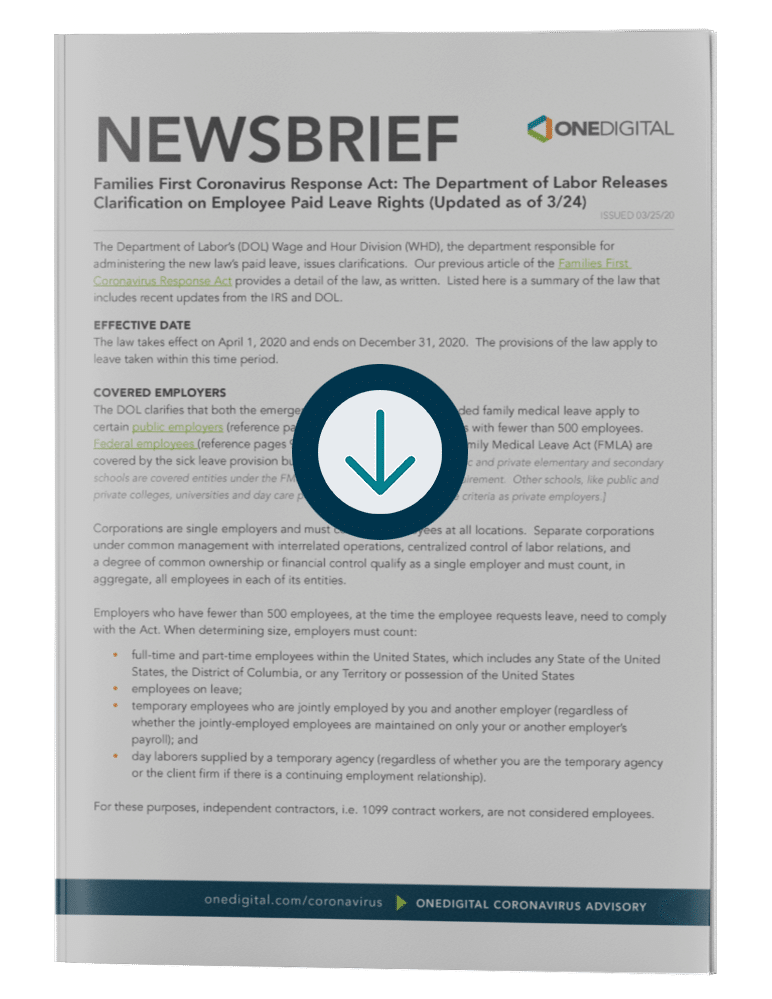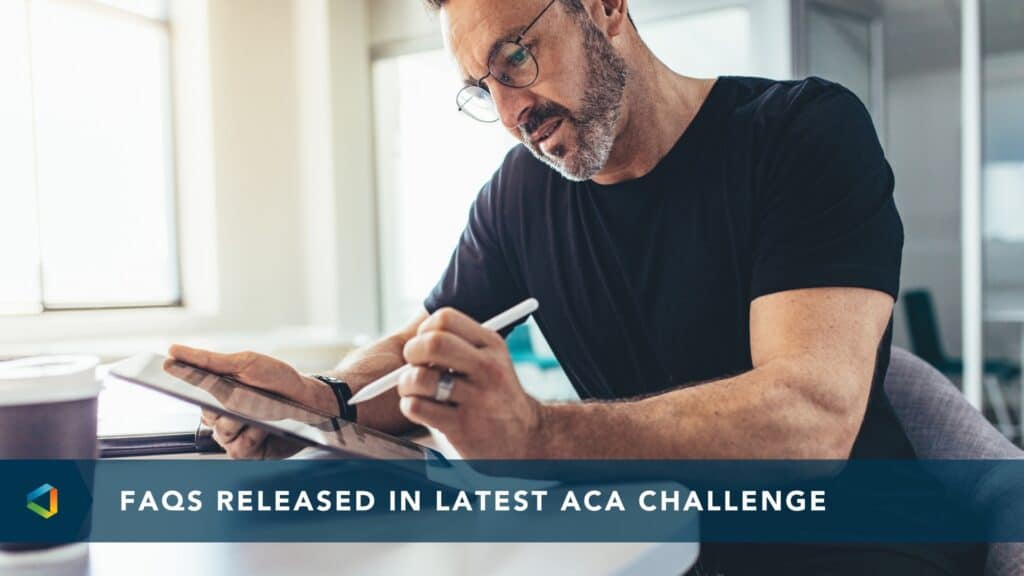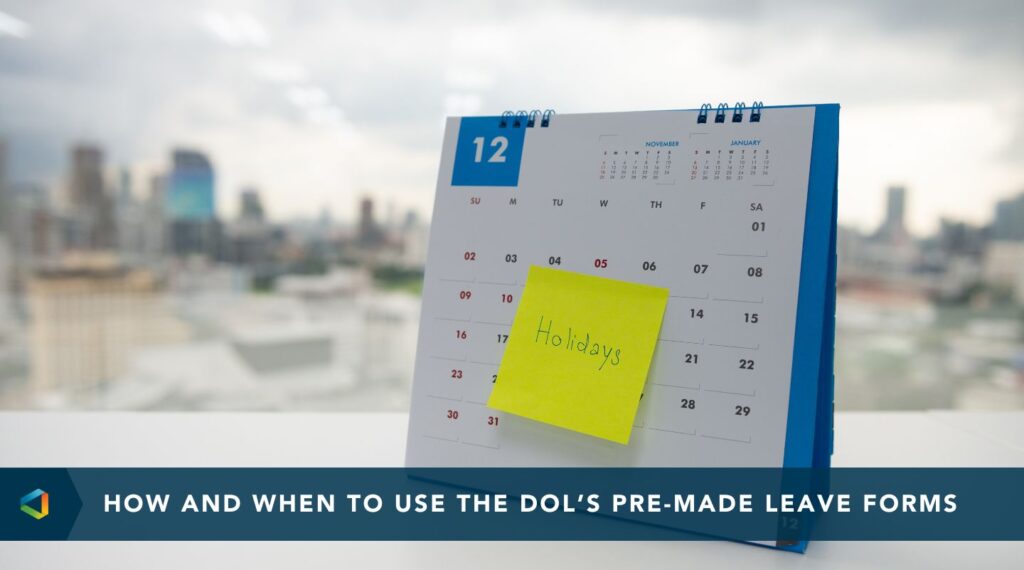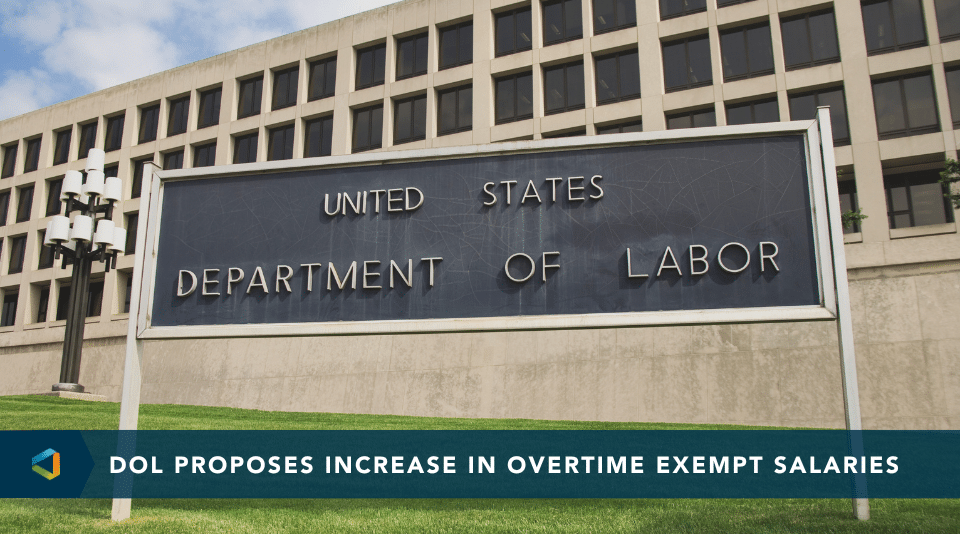Compliance Confidence
The Department of Labor Releases Clarification on Employee Paid Leave Rights - Updated
The Department of Labor Releases Clarification on Employee Paid Leave Rights - Updated
Families First Coronavirus Response Act (H.R.6201)
(Updated as of 3/24)
The Department of Labor’s (DOL) Wage and Hour Division (WHD), the department responsible for administering the new law’s paid leave, issues clarifications. Our previous article of the Families First Coronavirus Response Act provides a detail of the law, as written. Listed here is a summary of the law that includes recent updates from the IRS and DOL.
Effective Date
The law takes effect on April 1, 2020 and ends on December 31, 2020. The provisions of the law apply to leave taken within this time period.
Covered Employers
The DOL clarifies that both the emergency paid leave and the expanded family medical leave apply to certain public employers (reference pages 9-10) and private employers with fewer than 500 employees. Federal employees (reference pages 9-11) covered by Title II of the Family Medical Leave Act (FMLA) are covered by the sick leave provision but not the FMLA expansion. [Public and private elementary and secondary schools are covered entities under the FMLA and not subject to any size requirement. Other schools, like public and private colleges, universities and day care providers are subject to the same criteria as private employers.]
Corporations are single employers and must count all employees at all locations. Separate corporations under common management with interrelated operations, centralized control of labor relations, and a degree of common ownership or financial control qualify as a single employer and must count, in aggregate, all employees in each of its entities.
Employers who have fewer than 500 employees, at the time the employee requests leave, need to comply with the Act. When determining size, employers must count:
- full-time and part-time employees within the United States, which includes any State of the United States, the District of Columbia, or any Territory or possession of the United States
- employees on leave;
- temporary employees who are jointly employed by you and another employer (regardless of whether the jointly-employed employees are maintained on only your or another employer’s payroll); and
- day laborers supplied by a temporary agency (regardless of whether you are the temporary agency or the client firm if there is a continuing employment relationship).
For these purposes, independent contractors, i.e. 1099 contract workers, are not considered employees.
Covered Employees
All employees of the employer are eligible for the paid sick time time if they are unable to work or telework. Only employees employed for 30 days or more are eligible for the expanded family medical leave, i.e. the 10 additional weeks for leave due to care of children resulting from school or place of care closure due to COVID-19. [Special rules apply for health care providers and responders.] To satisfy the “30 day” requirement, employees will need to appear on the employer’s payroll for 30 calendar days immediately prior to the day leave begins.
Paid sick time does not carryover from one year to another. Employees have no entitlement to any reimbursement for unused leave upon termination, resignation, retirement, or other separation from employment.
Exemption for Employers with Fewer than 50 Employees
Employers with fewer than 50 employees are eligible for an exemption for the leave related to caring for children due to school/place of care, closures or for certain provisions if doing so effects the viability of the business. Eligible employers must document how this would affect viability of the business in order to take advantage of this exemption. The DOL will issue future guidance on how to take advantage of this provision.
The DOL expects to issue additional regulations in April 2020 that will identify certain provisions that may not apply to employers with fewer than 50 employees.
Payroll Tax Credit
Employers receive 100% reimbursement for paid leave under the Act. This includes the cost to maintain health insurance. Self-employed individuals receive an equivalent credit. Payroll taxes do not apply to amounts paid out under the Act.
Reimbursement is a dollar-for-dollar immediate offset against quarterly payroll taxes. In forthcoming guidance, the IRS will allow employers to keep the monies withheld for federal income tax and both the employee’s and employer’s share of Social Security and Medicare taxes rather than deposit them with the IRS. In this way, employers keep their payroll tax funds to offset the new expenses they incur.
If the amount paid out in leave and health care expenses exceeds the employer’s tax liability, employers can seek an expedited advance from the IRS using their claim form, which is set for release this week. The IRS anticipates a two-week turn-around time, or less, to process these requests.
Self-employed individuals will be able to claim these credits on their income tax returns and will reduce estimated tax payments.
Notice Requirements
Employees should provide notice of leave to their employers as soon as possible for an upcoming leave. After the first workday of sick leave, employers may require reasonable notice to be eligible for continued paid leave. Each covered employer must post in a conspicuous place on its premises a notice of FFCRA requirements. The model notice, along with FAQs about the notice requirements, is available here.
Benefits Payable by Covered Employers
| # | Leave Reason | Duration | Pay Rate |
|---|---|---|---|
| 1 | Employee is quarantined or isolated due to Federal, state, or local order related to COVID-19 | 2 weeks
Full-time = 80 hours Part-time = average number of hours that employee works, on average, over a two-week period* |
Regular rate of pay or minimum wage, whichever is greater, up to $511 per day and $5,110 in aggregate over the 2-week period |
| 2 | Advice by a health care provider to self-quarantine due to COVID-19-related concerns | ||
| 3 | Employee experiencing symptoms of COVID-19 and seeking a medical diagnosis | ||
| 4 | Employee’s need to care for an individual who is subject to an order or who has been advised to quarantine by a health care provider | 2/3 of regular rate of pay or minimum wage, whichever is greater, up to $200 per day and $2,000 in aggregate over the 2-week period | |
| 5 | Employee’s need to care for a son or daughter if the school or place of care closes or is unavailable due to COVID-19 precautions | 12 weeks
|
2/3 of regular rate of pay or minimum wage, whichever is greater, up to $200 per day and $12,000 in aggregate over the 12-week period
[Regular rate of pay includes all hours that would have been normally scheduled to work, even if it is greater than 40 hours, i.e. includes overtime – pay does not need to include a premium for overtime hours]</font |
| 6 | The employee is experiencing any other substantially similar condition specified by the Secretary of Health and Human Services (HHS) in consultation with the Secretary of the Treasury and Secretary of Labor | 2 weeks
Full-time = 80 hours |
2/3 of regular rate of pay or minimum wage, whichever is greater, up to $200 per day and $2,000 in aggregate over the 2-week period |
* If the normal hours scheduled are unknown, or if the part-time employee’s schedule varies, you may use a six-month average to calculate the average daily hours. This also applies to those paid in commissions, by tips, or piece rates. Such a part-time employee may take paid sick leave for this number of hours per day for up to a two-week period, and may take expanded family and medical leave for the same number of hours per day up to ten weeks after that.
Non-enforcement Period
The Secretary of Labor has issued guidance indicating that there will be a non-enforcement period for the month of April. Instead, they’ll focus on helping employers comply with the new rules. This means that the DOL will not penalize employers for violations of the Act so long as employers act reasonably and in good faith and work with the DOL to comply over the next 30 days.
More guidance and direction will be forthcoming from the various Departments over the coming weeks to further clarify additional parts of this law. We will bring those as soon as they are available.
DOWNLOAD THE NEWSBRIEF: Families First Coronavirus Response Act: The Department of Labor Releases Clarification on Employee Paid Leave Rights

For more information on evolving regulatory regulations the wake of the COVID-19 pandemic, visit the OneDigital Coronavirus Advisory Hub, or reach out to your local OneDigital advisory team.
Additional Resources:
IRS Update 3/20/20
Department of Labor Updates 3/24/20
- Department of Labor: Families First Coronavirus Response Act: Employee Expanded Family and Medical Leave Rights (for employees)
- Department of Labor: Families First Coronavirus Response Act: Questions and Answers
- Department of Labor: Families First Coronavirus Response Act: Employer Expanded Family and Medical Leave Requirements (for employers)




